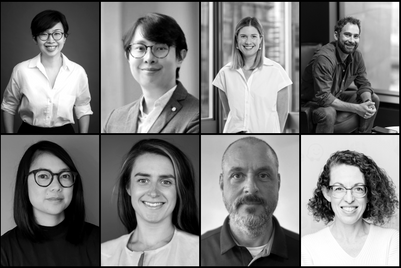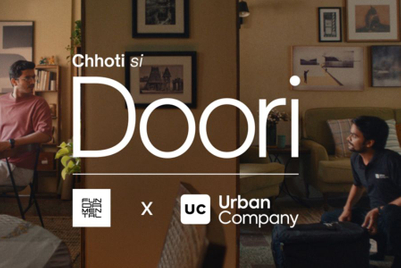
I craft brands that stay—in memory, in meaning, and in the market. For fashion and jewellery brands, Diwali is the highest-earning season. Yet year after year, briefs arrive late—often in September—with urgent goals like: ‘We need a festive drop campaign, emotional hook, influencer plan—and it must drive conversions fast.’
By then, media costs are surging, influencer calendars are full, and consumer decisions have already begun. If you are showing up in Q4, you are not competing for memory, you are competing for leftovers. The real campaign window is Q3 (July–September), not October.
Q3 is the most undervalued quarter in terms of media efficiency and conversion quality. The quarter presents the most budget-efficient window. Here is what we observed from Nimida-managed campaigns and industry data in 2023–24:
• Meta ad CPMs in August were 22–26% lower than they were in October, during Diwali week
• YouTube pre-rolls and bumper ads delivered 40% more impressions per rupee during Ganesh Chaturthi vs. Navratri
• Influencer fees rose by 2.3× between Rakhi and Diwali, especially for Tier 1 fashion and jewellery creators
• Early-season CRM campaigns (email, WhatsApp) saw 3x higher open and conversion rates when launched during Rakhi or Onam, compared to Diwali week when inboxes are cluttered
Brands that invested INR three lakhs to INR five lakhs in Q3 influencer and retargeting loops saw up to 4.1x ROAS by the time they activated Q4 push—versus brands that went all-in in October and ended up overspending on CPM without recall.
Fashion and jewellery aren’t driven by price alone. They are driven by emotion, timing, and convenience. Today’s buyers don’t have time for fittings, stitching, or sourcing multiple pieces. They want a look that is curated, pre-stitched, and deliverable in one box. Let’s look at the consumer buying triggers you must design for this segment in Q3.
• Rakhi (August): Sentimental, sibling-led gifting, ready-to-wear ethnic sets
• Onam and Ganesh Chaturthi (August-Sept): Culture-driven elegance, gold tones, sarees, temple jewellery
• Wedding season planning (September onwards): Bridesmaids’ styling, pre-festive jewellery sets, trousseau combos
• Back-to-campus / work: Gen Z styling, fusion-wear, modern ethnic picks for convenience-led fashion
Brands that make style convenient—with pre-stitched blouses, curated bundles, WhatsApp styling assistants, and time-saving delivery—will outsell even the most glamorous product when the decision window shrinks.
So what are the ideal campaign timelines for Q3 and Q4? Start with cue seeding in July. Examples of thematic areas to focus on can be monsoon elegance, sibling nostalgia, and pre-campus content. Carry out micro-activation during August with campaigns such as Rakhi combos, Onam drop tests, or bridal teaser reels. September presents the familiarity layer opportunities such as for Ganesh Chaturthi rituals or influencer-led trousseau look-books. Lastly, October is when you can have a conversion burst with a focus on activities such as Dhanteras gifting, Diwali wardrobe launches, performance retargeting, etc. Consumers shouldn’t discover your brand in October. They should already feel emotionally connected to it.
Let’s also explore the right budgeting strategy for fashion and jewellery brands. For Q3–Q4 festive campaigns, we recommend a 60-20-20 split. Dedicate 60% in Q3 (July–September) for top-of-funnel awareness, memory-building, influencer and CRM seeding. Spend 20% in early October for retargeting, lead activation, and WhatsApp flows. Lastly, spend the balance 20% in late October and November for cart recovery, personalised gifting pushes, and last-mile upsells.
This structure protects you from inflated Q4 media costs, over-leveraged creators, and last-minute creative pressure — all while enabling your campaign to scale gradually with relevance.
On the digital front, let’s examine how the playbook should look like for fashion marketers and what they must implement this quarter. For your Reel series, start with Rakhi with a focus on emotion, build with aspiration during Onam and Ganesh Chaturthi, and close with urgency during Diwali. Use influencer drops; rope in tier-2 creators during Rakhi to seed storytelling affordably. Craft a styling engine by offering pre-curated looks, ‘one-click’ festive wardrobes, and styling via chatbot or WhatsApp.
Enhance the productivity of your CRM funnel by segmenting by previous festive buyers, and wish-list savers, and retargeting them via email or SMS with styling ideas. Create pre-order systems by launching waitlists in Q3 to forecast stock and lock customer interest ahead of Q4 chaos.
Lastly, in fashion and jewellery, style matters, but ease and timing win. Shoppers no longer wait for Dhanteras to make buying decisions. They explore in Rakhi, shortlist in Onam, try in Ganesh, and buy when reminded in Diwali week. And they buy from the brand that already feels familiar—and makes the festive experience effortless.
If your festive campaign starts in Q4, you are too late to influence memory. If you activate in Q3, you control the conversation, and the cart. The most beautiful campaign won’t win Diwali. Rather, the most emotionally familiar, easily wearable, and wisely timed one will.

— Kajal Sharma, brand strategist and head, Nimida Digital.



.jpg&h=334&w=500&q=100&v=20250320&c=1)








.jpg&h=268&w=401&q=100&v=20250320&c=1)
.jpg&h=268&w=401&q=100&v=20250320&c=1)

.jpg&h=268&w=401&q=100&v=20250320&c=1)




